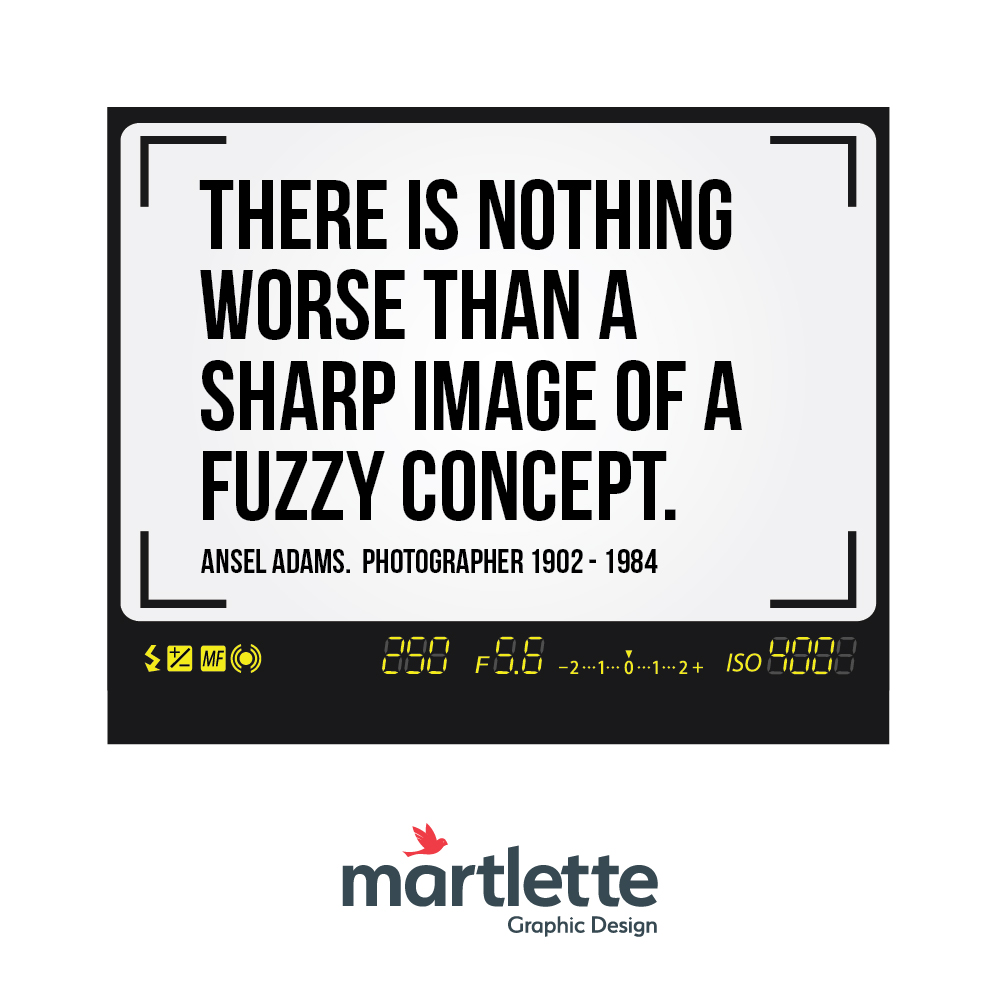Ansel Adams – Photographer 1902-1984
And likewise, there is nothing worse than a fuzzy image of a sharp concept!
When promoting your business services online, it is increasingly becoming more and more important to use images, graphics and videos with the user in mind. Platforms like Pinterest, Instagram and YouTube are all designed to communicate to your audience using visual content. So make your images count!
When posting to your website, social media channels or sending out your regular newsletter, ask yourself the following questions:
- What message am I trying to send to my audience?
- What image would best communicate my message?
- What device is my audience using to view my content? (Mobile, desktop, television)
- What type of image will my audience find interesting, entertaining or informative? (Chart, infographic, photograph, video etc)
You can find some of the answers to these questions by reviewing your website statistics (Google Analytics) or your social media user statistics. Alternatively, you can ask a sample of your audience for their feedback. The more you know about your audience, the better you will deliver.
Once you have your ideas together, you can start creating your images. Here is our guide to help you ensure that your images and ideas are far from fuzzy!
1. The biggest images are not always the best!
When we say big, we are not talking about the physical dimensions of your images or videos. By size, we are referring to the file size, measured by kilobytes (KB), megabytes (MB) or even gigabytes (GB).
A photo or video that is taken with even the most standard digital camera, will deliver a file that is at least 2-3MB in size. This is quite large for most web users and will only irritate your audience when they experience delayed loading time.
To ensure your files are the best size for viewing online, use an editing program like photoshop to resize your images for the web. Videos can be uploaded easily to your YouTube channel and embedded into your website or social media post at the optimum size.
2. What does the quality of your image say about your business?
A low quality image will only say the same about your business – low quality. Ensure your images are high quality, in focus and any text is legible, meaningful and relevant to the message you are trying to convey.
Ask yourself if the image you have chosen enhances your message or if you are only trying to fill a blank space. Perhaps a photo or video is not the best way of communicating what you want to say and you are better considering a chart or infographic. Martlette Graphic Design in Geelong works with many of its clients to create engaging infographics that communicate specific messages, business processes or services. This can sometimes take the pressure away from having to write lengthy article – as the image or chart says it all!
3. Can’t I just grab any photo I find online?
Well, in theory.. Yes you can. But there is a price to pay.
Copying a photo that you find on another website or on google images is not something Martlette recommends under any circumstance. The use of a photo or video should involve obtaining the permission of the image owner or come as a result of purchasing the photo and its rights of use. Ignoring this basic rule can result in legal issues with image owners and can cost your business a small fortune.
The use of copied online images can also undermine your brand and how your audience perceives you. Is using a copied image authentic and honest? The answer is certainly NO! If you have found an image online that you really like, Google has a handy little tool to check for image rights.
Link: https://support.google.com/websearch/answer/29508?hl=en
There are plenty of online stock photography libraries around these days where you may purchase the rights to use a photo or video. Whilst some of these libraries offer great images, be mindful that you are not the only business who may also be using the image. How many times have you seen the same clean cut man shaking hands and flashing his pearly white smile on a website or advertisement?
Don’t get us wrong, stock photos are often visually appealing and can offer great “says it all” photos for business websites. However, these images do just that – “say it all” and don’t really say anything specific – and for this reason you should consider using images that make sense and are as original as possible. Not all businesses can afford to set up a photo shoot to get the exact images they want. But, be willing to spend a little time and money to find a quality image that looks good and makes sense. A graphic designer like Martlette can always help you find or create the perfect image too.
4. Design is not just what it looks like. Design is how it works!
Images are a powerful way to communicate a message and there is no one who believes this more than a graphic designer.
The growth and popularity of sites like Pinterest, YouTube and Instagram has been fuelled by the effectiveness of communicating through images. There are so many successful businesses out there today who are using images that are working hard and smart for them online.
So the key is to make sure your images “WORK” and not just fill blank space. Every image that you include on your website, social media post, email newsletter or online advertisement – ask yourself (and perhaps another non-bias person) if the image communicates your specific purpose and message.
Martlette Graphic Design in Geelong provides clients with advice and image services to assist businesses to communicate their messages through design and imagery online and in print. Give us a call to discuss your message and see what we can create for your business!

